
учебный год 2023 / Stöcker, Stürner, Flexibility, Security and Efficiency of Security Rights over Real Property in Europe. Vol. III
.pdf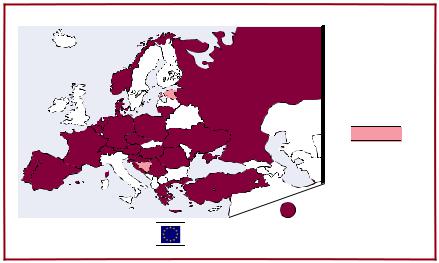
Commentary on the slides |
19 |
I.Types of security rights over real property
1.How many types of security rights over real property are there?
If one is going to talk about the mortgage law of a country, the first question that arises is whether this legal system only knows one type or kind of security right over real property or whether there are several types or forms, as is the case in most countries. Whether a security right over real property qualifies as an independent type of security right over real property, that is dealt with separately in literature and case law, or as a form differing in detail either as a result of statutory provisions or credit practice, is not to be determined on the basis of strictly applied standardised criteria. Instead this decision has been left to the respective national experts.
In relation to many subsequent questions on other slides, the answer then depends on whether the question and the answer variants are formulated in a sufficiently abstract and general manner that they apply in respect of all types of security right over real property. Where this is not the case then the answer applies in respect of the security right over real property on which slide I.4 is based as the most important type of mortgage and which, in accordance with the aim of the work of the Round Table, is the one with the greatest flexibility.
The maximum amount hypothec, so important in credit practice, can be understood in most cases as a special form of the intrinsically accessory hypothec. On account of its structure, which in many countries is far removed from strict accessoriness, it is, however, in most cases classified by the participating experts as a separate type of security right over real property.
I.1 How many types of security rights over real property are there?
 2
2
several types and forms of security rights
1
only 1 type
|
|
JP |
Eurohypothec according to Basic Guidelines: |
|
- in addition to national security rights |
|
||
|
|
|

20 |
Commentary on the slides |
2.Are mortgages embodied in a security paper
(certificated rights) or are they only entered in the register?
The question as to whether a mortgage is only recorded in a register or whether it may (also) be embodied in a deed is of fundamental importance for many reasons.
It is true that the creation of a certificated mortgage is associated with somewhat greater expense, but as a rule registration costs can be avoided on its transfer and transactions can be carried out more quickly. The speed of transactions can, however, also be very rapid with electronic registration systems so that in countries with largely computerised registration systems this difference loses significance in this respect.
It can be observed particularly in Sweden that the well advanced computerisation of the land register is displacing certificated rights which are, in principle, widely used. Sometimes certificated rights survive in theoretical form, but are generally no longer issued as paper documents, being instead only recorded in registers (“virtual certificated rights”).22 The difference between the certificated right and the register right thus begins to become blurred. The legal situation in Denmark is similar, but the issue of certificates there has, in the meantime, actually been prohibited.23
Constructive possession under the law of property is, however, possible with certificated rights that are paper-based (issued in document form).24 This facilitates partial assignments that are effective in rem, making efficient syndication easier. In addition certificated rights may permit insolvency-proof fiduciary arrangements.
The embodiment of a mortgage in a security paper does not necessarily mean that the transfer principles under the law relating to securities are applicable, quite irrespective of the question as to the type of security paper in which a mortgage is embodied. Ultimately it can be seen that the form of the mortgage may indeed have consequences, particularly for its marketability, but this only plays a minor role in countries where an efficient land register system exists. Where the registration process is still time-consuming the circumstances are different, however, and in these countries certificated rights can certainly contribute to an efficient use of security rights over real property, particularly in the area of syndication.25 Basically it may be advantageous with the current state of computerisation of register systems if a legal system permits both forms so that in practice the best option may be chosen in a given case.
22So-called datapantbrev, regulated in lag (1994:448) om pantbrevsregister. Marthinussen, Forholdet mellom panterett og pantekrav (The relationship between right of lien and mortgage claim), Bergen 2009, 12.2.3.1., p. 218, footnote 898 with further references to Swedish law.
23Marthinussen, Forholdet mellom panterett og pantekrav, 11.5., p. 197, footnote 895 with further references to Danish law.
24On the partial assignment of certificated land charges without partial certificate issue under German law cf. Picherer, Sicherungsinstrumente bei Konsortialfinanzierungen von Hypothekenbanken [Security instruments for consortium financing by mortgage banks], Frankfurt a.M. 2002 (vdp’s publication series, Volume 14), p. 256 et seq.
25Cf. VII.11.
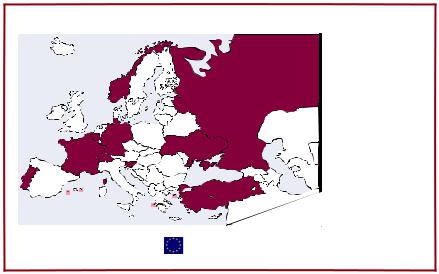
Commentary on the slides |
21 |
I.2 Are mortgages embodied in a security paper (certificated rights) or are they only entered in the register?
 3
3
both certificated security rights and register-only security rights
 2
2
exclusively certificated security rights
 1
1
exclusively register-only security rights
 JP
JP
Eurohypothec according to Basic Guidelines: |
|
- depending on the national law |
|
|
|
3.Can mortgages be established on several properties in such a way that the mortgagee can choose from which property to be satisfied?
It happens frequently in practice that the level of a loan far exceeds the value of an individual plot of land. It is then very beneficial as regards the loan accommodation if additional plots of land are also available that can be used to secure the loan. The inclusion of several plots of land in one investment is the rule, when larger properties are built that extend simultaneously over several plots of land.
In many countries the statutory solution is for various mortgages to be established on several plots of land in respect of the same claim. This does usually have the consequence, however, that costs and expenses are incurred for each mortgage separately.
The normal case in Europe is for a single mortgage to be created over several plots of land, in other words a collective security right. A marked reduction in costs and charges can be achieved in this way. For the individual landowner the collective security charge has the positive effect that his in rem liability is reduced to the extent that the mortgagee is satisfied from another plot of land.
For the mortgagee the collective security right has the advantage that the reduction in value of one plot of land may be balanced by the increase in value of another plot of land. The joint in rem liability of the collective security right thus achieves a portfolio effect that can play a significant role precisely in relation to the financing of property portfolios. This is also very useful for the property investor who possibly could not implement his whole project without this balancing and risk-reducing portfolio effect, because one or more of the plots of land could not have been included in the project or could not have been included on the same loan terms without this balancing effect.
Spanish law has a distinctive feature. In principle it does permit the collective security right but the amount of the claim must be divided up among the plots of land so
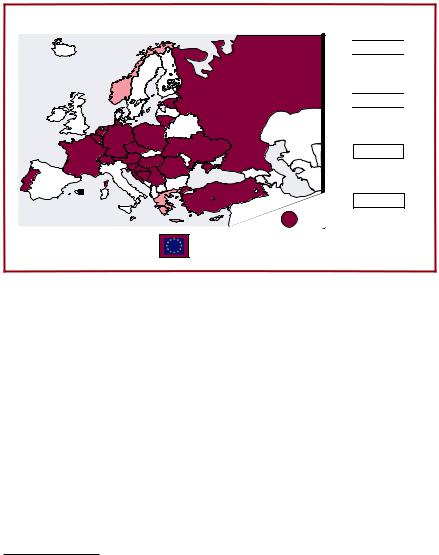
22 |
Commentary on the slides |
that in each case a calculable share of the loan amount is apportioned on the individual plots of land. The total of these shares is not permitted to exceed the amount of the loan. Accordingly the in rem portfolio effect is lost.
It is frequently argued against the collective security right that because of the liability of each plot of land for the full amount of the loan, the owners of the encumbered plots of land are completely at the mercy of the holder of the collective security charge because there is no more room for the collateralisation of further loans. The counter argument is, though, that in principle a further second-ranking collective security right on the same plots of land can be established for an additional mortgagee. However, particularly with portfolio financing, property values have, as a rule, been used up to such an extent that the plots of land have no suitable security coverage for any further lending.
I.3 Can mortgages be established on several properties in such a way that the mortgagee can choose from which property to be satisfied?

 4
4
yes, one security right can be established on several properties

 3
3
yes, several security rights can be established securing the same debt
2
the amount of the debt must be divided on the properties
1
no
JP
Eurohypothec according to Basic Guidelines:
4.Table of security rights over real property
The chart specifies in alphabetical order of the countries covered the type of security right over real property primarily taken as a basis in this paper and its name in the national language.
In accordance with the objective of the work of the “Round Table”, in each case the most flexible type of security right over real property from each legal system is included, even if this is not the most frequently chosen variant in practice, but if it is still at least used with representative frequency.
By way of example, in Turkey the most flexible option would in principle be the mortgage certificate modelled on the Swiss Schuldbrief (debt certificate – cédule hypothécaire) but it is not used in practice in Turkey. The reason for this is that in accordance with section 899 of the Turkish Civil Code the competent land registry would have to issue a valuation of the property to be encumbered, and the state would be liable for any error in connection with this valuation in terms of section 905 Civil Code.26
26On the parallel in French law at the end of the 18th Century cf. Stöcker, Die Eurohypothek [The Eurohypothec], p. 90.
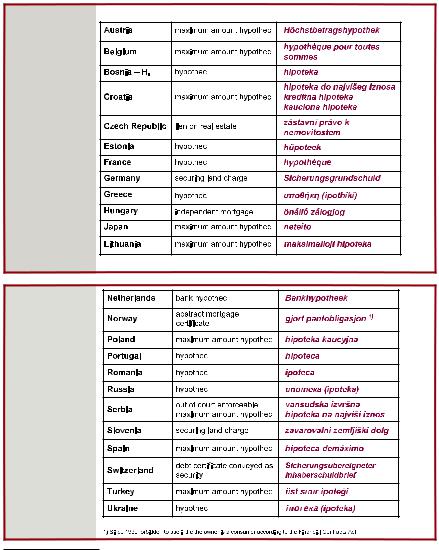
Commentary on the slides |
23 |
This is similar to French law, where in 2006 the legislator introduced the “hypothèque rechargeable”, this being a flexible security right over real property, but so far not commonly used in practice. This edition, therefore, takes the normal contractual “hypothèque” as a basis of the answers regarding France.27 To finance the acquisition of real property French practitioners regularly refer to the more cost efficient “privilège du prêteur de denier”, which, however, employs almost the same legal theory as the contractual “hypothèque”.28
The following slides show the legal situation of the types of security right over real property mentioned here, which are the most flexible types in their respective legal systems:
27Regarding “hypothèque rechargeable“ see Aynès/Crocq, Les sûretés – La publicité foncière, 4th edition 2009, p. 303 et seq.; Legeais, Sûretés et garanties du crédit, 7th edition 2009, p. 416 et seq.; Dagot, L’hypothèque rechargeable, 2006; Gourio, L’hypothèque rechargeable, RD bancaire et fin. No 9/10 2006, p. 39 et seq.
28See Aynès/Crocq, Les sûretés – La publicité foncière, 4th edition 2009, p. 330 et seq.

24 |
Commentary on the slides |
5.Is the duration of the security right over real property limited by law?
Security rights over real property are, as a rule, used to secure long term loans. Therefore by far the majority of European legal systems do not provide for any kind of time limit, but instead provide, in principle, for security rights over real property to have unlimited validity.
An absolute time limit imposed by statute on a security right over real property29 carries the risk that the mortgagee of the claim to be secured loses his security right. The outcome of this is that legal transactions using the mortgage for long-term financing are impeded. This applies in effect also where a time limit is agreed contractually, unless it is able to extend well beyond the duration of the loan. In this case, however, the question in turn arises as to what purpose an optional time limit of this sort is supposed to serve. Sometimes it is provided that the mortgagee may have an extension of the mortgage recorded or registered, such as, for example, in Finland. Regulations of this type may have had at their base the efforts of the 19th Century reform movements to prevent new burdens on land with no time limitation after the abolition of feudal burdens. Today such restrictions appear if anything to be an impediment for legal transactions.
If a security right over real property ends as a result of the term expiring and if it can be extended, the question arises as to whether the same formal requirements have to be fulfilled as applied when it was initially arranged and to what extent reduced formal obligations with lower costs can make an extension easier.
A particular feature is found in Lithuania. There the maximum amount hypothec is automatically converted after 5 years into a normal hypothec without the possibility of this being excluded contractually or any subsequent agreement to the contrary. The consequence of this is that flexibility is then lost.
I.5 Is the duration of the security right over real property limited by law?
3
no
 2
2
automatic conversion into a normal hypothec
 1
1
yes, with a statutory limit
 JP
JP
29Such a limitation applies e.g. in Belgium and Luxembourg as regards the effect against third parties; by contrast the security right over real property is effective between the parties as long as the secured claim exists.

Commentary on the slides |
25 |
II. Public disclosure requirements and protection of trust
The security of rights in real property and accordingly also of mortgages is dependent to a very large extent on the reliability and effectiveness of the register system in which rights over land are registered. The reliability of such systems is an essential prerequisite for the security of property transactions in general and for protection of mortgagees in particular. Special importance thus attaches to the protection of reliance on the accuracy and completeness of registration.
Even though in many European legal systems the issuing of documents regarding rights in property was of fundamental importance for a long time, for many years a noticeable trend has been apparent across Europe towards strengthening the significance of registration. It has been supported not least by the development of the computerised register.30
1.Who keeps the land register?
Register systems for real property go under widely differing designations. The term land register is going to be used here as this form of register is common in many Continental European legal systems.31
In Central Europe the task of keeping the land register is primarily entrusted to land register authorities that are based at the courts. This is particularly the case in countries where, to a greater or lesser extent, legal inquiries are undertaken in the course of the registration.
The desire behind this tradition of court-based operation of the land register is to make legal dealings between private individuals independent of state authorities who could be subject to instructions from the government, and to incorporate the independent justiciary as an element of precautionary administration of justice. If the general guarantee of judicial review of official acts is implemented, as, for example, in Germany (Art 19 para. 4 of the Basic Law [Grundgesetz – GG]), this consideration should, however, have lost some of its original importance, even though the notion of judicially guaranteed independence still has something in it. In many Central and Eastern European countries importance is still attached to this notion, not without reason. It is precisely in these countries that the land register system can benefit from the legal know-how of judicial employees and judges.
In countries where traditionally some authorities exist, which are to a greater extent, not under a duty to comply with instructions, such as in Sweden and Great Britain, for instance, the land register is often run by a central national authority. Where, as in Sweden, quasi-judicial functions within the law relating to adjoining owners and the law of enforcement are allocated to this authority, a close relationship to the judicial system can be seen. In other countries, such as the Netherlands, for example, centralisation was introduced hand in hand with the modernisation of the register because reforms can be implemented more quickly within a centralised agency.
30Cf. above in C.I.2.
31Only if the purchaser can confine himself to inspection of the land register is the narrower sense of a Central European land register system (Grundbuch) being referred to. The other public disclosure systems are, by contrast, mostly described as property registers or mortgage registers. In this study this distinction is, however, not made as it does not permit sharp dividing lines to be drawn and in addition is not used uniformly in international usage.
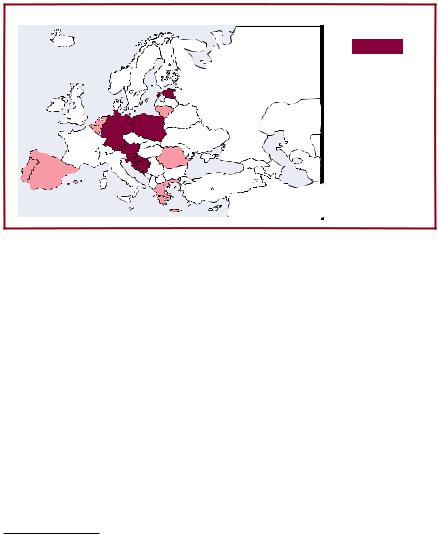
26 |
Commentary on the slides |
It is primarily in parts of Central Europe and in Eastern Europe that the land register system sometimes lies within the jurisdiction of administrative authorities under a duty to comply with instructions. Quite commonly, in the Czech and Slovak Republics, for instance, this can be traced back to the fact that after the end of Communism the land registers were re-established on the basis of the land cadastre with the cadastral authorities playing an important role.
Further afield still, in some provinces of Canada (British Columbia and New Brunswick) and in parts of the Commonwealth, the authorities contract private companies to run the land register.
Nothing can be said about the reliability of the running of the register merely on the basis of how it is classified. What is important is to ensure that as the central source of confidence in the security of real estate transactions, the land register administration is reliable and not subject to interference.
II.1 Who keeps the land register?
3
courts
 2 an independent public authority
2 an independent public authority
 1
1
a public authority subject to instructions
 JP
JP
2.Which rights are registered?
Nearly all the legal systems covered here agree that ownership, mortgages and other rights in rem can be registered in the land register. Only as an exception is a special register operated for mortgages.32 This, however, can also be achieved by a common user surface for the different registers as exists in Lithuania. It is certainly preferable for all rights to be included in one single register so that quick and efficient access to information can be provided.
32On the current situation and on the efforts to bring in reforms in Ukraine cf. Kucherenko/Lassen, p. 214 et seq.
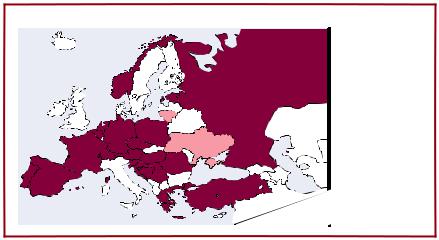
Commentary on the slides |
27 |
II.2 Which rights are registered? |
|
 2
2
proprietorship, security rights and other limited rights over real property
 1
1
proprietorship and other limited rights over real property, particular register for security rights
 JP
JP
3.Are contracts and disposals over real property concluded before a notary?
The legal situation in Europe is very diverse in relation to the question of what formal requirements apply in respect of contracts and disposals relating to real property. In countries with civil law notaries, notaries usually have a crucial part to play in real property transactions. In many countries involvement of a notary is even a mandatory stipulation of the law; in others it is at least a requirement for later registration and for this reason it is common in practice. In some countries real property transactions are mostly carried out by specialist advocates.
Many countries stipulate that an independent expert who conducts the transaction is consulted as a “neutral third party”. The state wishes in this way to ensure the reliability of real estate dealings and the transparency of legal transactions in relation to plots of land. There is manifold public interest in this. Uncertainties and erroneous transactions represent a non-manageable risk for the parties involved, but they also represent a significant non-manageable risk for all third parties who are later involved with a property. If real estate transactions are unreliable, the whole real estate industry and accordingly a considerable part of the national economy may be adversely affected. Quite normal transactions such as the sale of a property with, as far as possible, the simultaneous cancellation of encumbrances and creation of new mortgages, attain a high degree of complexity that requires professional support. It is therefore not surprising that nearly all countries make such an intermediary role either mandatory or commonly refer such transactions to a particular group of persons who regularly handle real estate transactions such as, for example, the specialised advocates (or licensed conveyancers) in England or by estate agents, who are under special public supervision, or banks in Scandinavian countries. If the involvement of a notary is not generally mandatory but does normally happen, such as in Austria, this is a matter of a voluntarily accepted offer of neutral advice. The notary’s involvement for recording purposes is often arranged in considerably different ways but the office
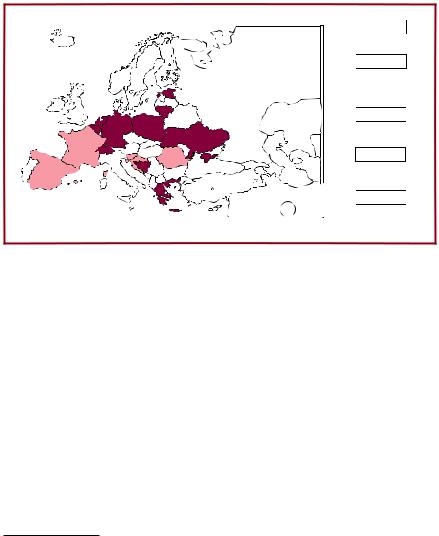
28 |
Commentary on the slides |
of notary must certainly be allowed the highest degree of neutrality, intensity of service and professionalism.33 The state frequently also combines fiscal interests with the involvement of third parties.
II.3 |
Are contracts and disposals over real property concluded before a notary? |
|
|
|
|
|
5 |
|
|
|
|
|
|
|
|
|
yes, mandatory by law |
||
|
|
|
|
||
|
|
|
|
|
4 |
|
|
|
yes, not mandatory for all types of |
||
|
|
|
transactions, but common in |
||
|
|
|
practice (e.g. for the purpose of |
||
|
|
|
third party protection) |
||
|
|
|
3 |
||
|
|
|
use of notary not mandatory, |
||
|
|
|
but common in practice |
||
|
|
|
2 |
||
|
|
|
|||
|
|
|
notaries do exist, but are |
||
|
|
|
usually not involved |
||
|
|
|
in property transactions |
||
|
|
|
1 |
||
|
|
JP |
not before notaries but usually |
||
|
|
|
with the assistance of |
||
|
|
|
specialised advocates or |
||
|
|
|
professional third parties |
||
4.What is the connection between the land register and the cadastre?
The binding data concerning the location and dimensions of a property is usually recorded in a cadastre. By contrast the legal relationships in real property are published in the land register. It is thus of particular interest who administers these registers and how their legal relationship to one another is structured.
Where there is well-functioning, proper administration it can be an advantage for land register and cadastre to be jointly administered. Predominantly, however, both registers are run separately, with the land register then making reference to the cadastre in order to clarify where the property is situated. It is striking that all the countries investigated here have a cadastre. Reference is, however, made to the UK where there is no separate cadastre34, but the register with its data on, e.g. boundaries and surface areas seems to this extent also to have no positive disclosure effect.
33An interesting comparison on the significance of the office of notary in relation to real property transactions was produced by Murray, Peter L.: Real Estate Conveyancing in 5 European Union Member States: A Comparative Study, August 2007; on this see also Murray, There is no free lunch, notar 5/2008, p. 4 et seq. Along with a comparative account the study contains individual national reports on Germany, England/Wales, Estonia, France, Sweden and the USA (Maine und New York); the study describes the relevant legal rudiments of a real property purchase and creation of a mortgage, the course of the transaction and the costs.
34Cf. Peter Sparkes: Real Property Law and Procedure in the European Union, Annotated Draft Questionnaire, Report from England and Wales, project is co-directed by the European University Institute (EUI) and the Deutsches Notarinstitut (DNotI), Würzburg/Germany, http://www.iue.it/LAW/ResearchTeaching/EuropeanPrivateLaw/Projects/Real%20Property%20 Law%20Project/England%20and%20Wales.PDF; LRA 2002 s 2 und s 68(1) (Land Registration Act 2002); D. A. Hurndall: England and Wales, 3.2.1 in: Property in Europe – Law and Practice, ed. Anthony Hurndall, London 1998, p. 113; Robert M. Abbey, Mark B. Richards: Blackstone’s Guide to the Land Registration Act 2002, Oxford 2002, p. 71.
